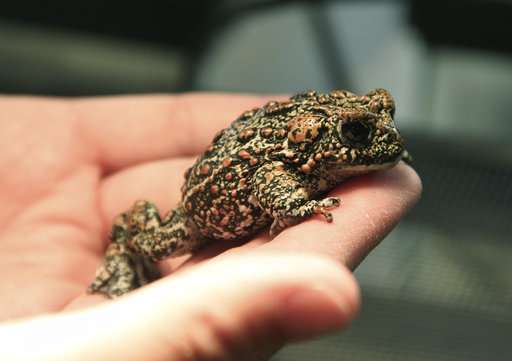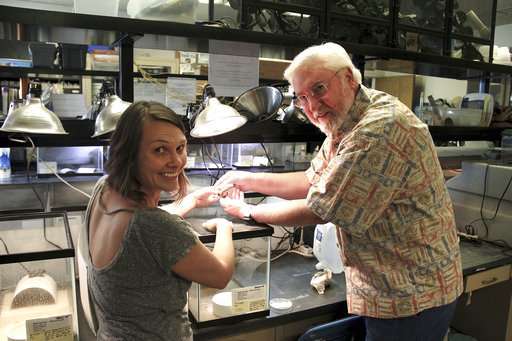Endangered species listing considered for rare Nevada toad

U.S. wildlife officials have agreed to consider Endangered Species Act protection for a rare toad in northern Nevada's high desert where one of the biggest producers of geothermal energy in the nation wants to build a power plant.
The U.S. Fish and Wildlife Service said Tuesday that conservationists presented substantial scientific information suggesting the Dixie Valley toad could be at risk of extinction. Its 12-month review will include examining the extent to which any conservation efforts have reduced the threats.
The 2-inch-long (5-centimeters) toad with flecks of gold on its olive-colored body was discovered in 2007 in thick underbrush of a spring-fed marsh in the Dixie Valley, where an ancient lake once covered 190,000 square miles (492,100 sq. kilometers).
It's only found in an area covering less than 3 square miles (7 square kilometers) in the marshy remnant of the lakebed east of Reno, Nevada.
U.S. land managers are considering Ormat Technologies' plans for a geothermal plant there next to the U.S. Naval Air Station Fallon.
Officials with the Arizona-based Center for Biological Diversity, which filed the petition seeking protection for the toad last September, said the wildlife agency's decision is critical to the future of one of the most vulnerable species in Nevada.
"This special toad is now one step closer to getting the lifesaving protection it needs," said Jenny Loda, a biologist and lawyer for the group.
A federal listing could trigger land-use restrictions, but it's not clear how it might directly impact plans for the geothermal plant in a state with a mandate to procure 25 percent of its energy from renewable sources by 2025.

Officials with the U.S. Bureau of Land Management said Tuesday the wildlife service's determination wouldn't immediately affect their review of the geothermal project. Paul Thomsen, Ormat's executive director of government and regulatory affairs, declined comment.
USFWS said listing the toad as threatened or endangered may be warranted based on potential threats posed by disease and predation by the much larger, non-native American bull frog, in addition to construction of the geothermal plant.
Eric Simandle, a former conservation biologist at the University of Nevada, Reno, who co-authored a paper on the "new cryptic toad species," said DNA studies determined it was closely related, but distinct from the Western toad found throughout the western United States.
Simandel said the last new toad species discovered north of Mexico was the Wyoming toad in 1968. It since has gone extinct.
Dick Tracy, a UNR biology professor who was the lead scientist on the project, said the toad is a good candidate for federal protection because construction of the geothermal plant could dry up its habitat.
BLM issued an environmental assessment of the geothermal proposal a year ago that tentatively determined that various forms of mitigation would prevent any danger to the toad. BLM spokeswoman Lisa Ross said the agency is still reviewing public comment on that assessment.
Loda acknowledged the wildlife service's decision "does not create a legal obligation for BLM to put its review of the geothermal project on hold."
But "we are disappointed to hear that it sounds like BLM is not planning to respond to this news by more closely scrutinizing the project's likely impacts to the toad, despite the potential for its protection under the Endangered Species Act," she said.
© 2018 The Associated Press. All rights reserved.


















